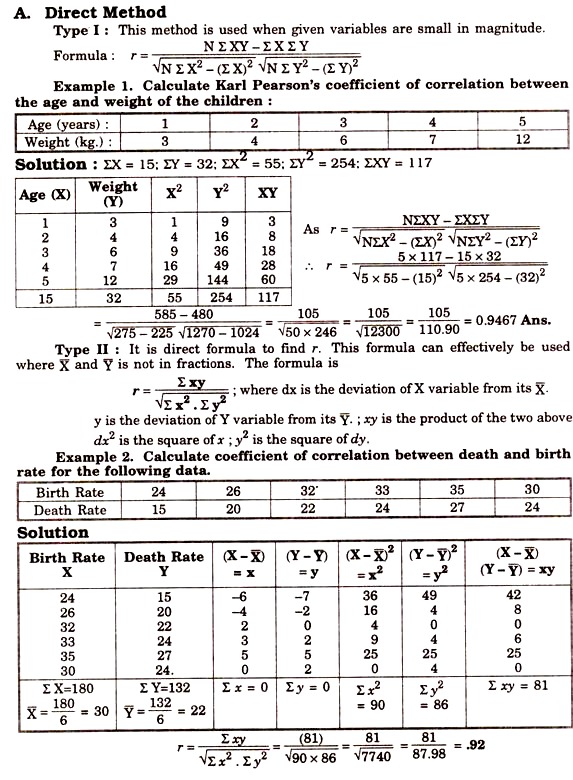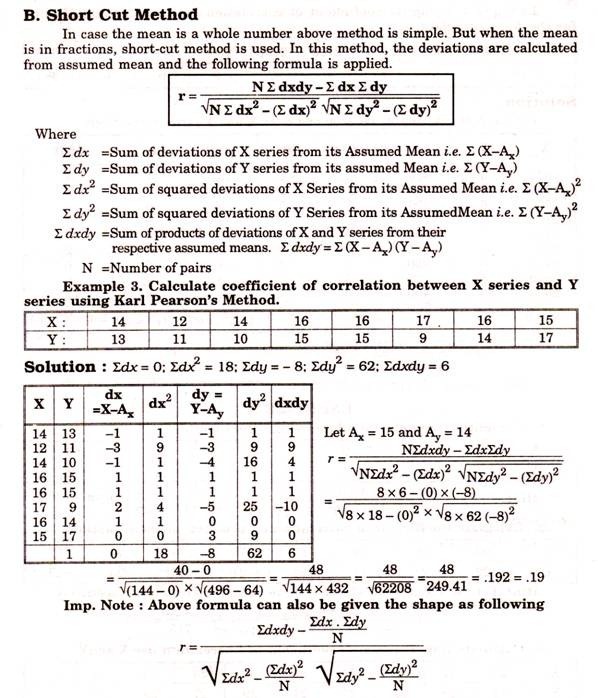Karl Pearson formulated perhaps the greatest formula to find the degree of correlation.
He being a reputed, well known statistician, worked very hard on the theory of correlation. This formula was established in 1896.
Merits and Demerits of Pearson’s method of studying correlation:
Merits:
ADVERTISEMENTS:
1. This method indicates the presence or absence of correlation between two variables and gives the exact degree of their correlation.
2. In this method, we can also ascertain the direction of the correlation; positive, or negative.
3. This method has many algebraic properties for which the calculation of co-efficient of correlation, and other related factors, are made easy.
Demerits:
ADVERTISEMENTS:
1. It is more difficult to calculate than other methods of calculations.
2. It is much affected by the values of the extreme items.
3. It is based on a many assumptions, such as: linear relationship, cause and effect relationship etc. which may not always hold good.
4. It is very much likely to be misinterpreted in case of homogeneous data.
ADVERTISEMENTS:
Assumptions:
Karl Pearson based his formula on following basic assumptions:
(A) Two variables are affected by many independent causes and form a normal distribution.
(B) The cause and effect relationship exists between two variables.
(C) The relationship between two variables is linear. It is often denoted by r.
Change of Scale and Origin:
There is no effect of any of the two types of change. We may add or subtract or multiply or divide each term by certain content, there is no effect on coefficient of correlation.


